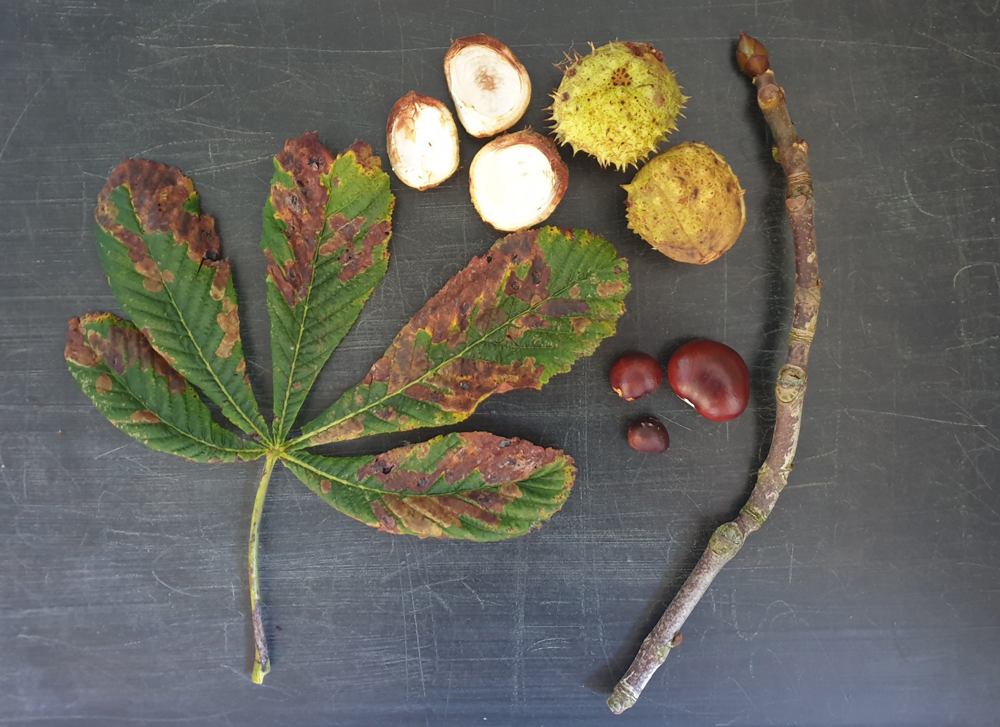
Dr Dave Aplin
Gardening… with botanist Dr Dave Aplin
Horse chestnuts (Aesculus hippocastanum) are under attack. Famous for conkers, large palmate leaves, and elegant candle-like spring flowers this common tree is likely to be planted much less in the future. The aggressor, a tiny inconspicuous moth, which 31 years ago was completely unknown.
If you look at the leaves of almost any horse chestnut, you won’t fail to notice narrow or blotchy, pale-yellow lines (turning brown) meandering across it. These areas are mines, created by the larvae of a tiny leaf mining moth, called rather descriptively the ‘horse chestnut leaf-mining moth’ or Cameraria ohridella. These caterpillars feed by tunnelling their way between the upper and lower surfaces of the leaf, leaving behind characteristic disfigurement.
It may surprise you to learn that this moth was completely unknown to science until 1984. In that year, it was first recorded in North Macedonia, where horse chestnuts can be found growing wild. Two years later in 1986, the moth was confirmed as a new species to science. Most newly discovered species are rare, because they have gone unnoticed and escaped the attention of scientists who classify organisms. However, in 1989 it appeared unexpectedly in Austria and since then been advancing across Europe with increasing numbers. The moth arrived in Wimbledon in 2001 and has since rampaged through the UK. Its trail of disfigurement so ubiquitous that it is almost an identification feature of the chestnut.
The unsightly appearance of its leaves causes damage, significantly reducing the amount food they can make through the process of photosynthesis. Denying a plant food has its consequences, in this instance there are reports of some conkers weighing half the amount they once did. This has serious consequences where the game of conkers is still played, and for the reproductive potential of this ornamental tree.
Horse chestnuts are not native to Britain, they arrived from the Balkans during the late 16th century, and since then have become a very popular ornamental tree in Britain. This disfigurement now puts into question the ornamental potential of this tree, because quite frankly, the leaf mines are unsightly.
So, what is the cure? There isn’t one. Locally, you can make a small difference by removing fallen leaves and placing them in a sealed plastic bag for twelve months. This will reduce numbers because the caterpillar overwinters protected within the fallen leaf mine. Simply placing them onto a compost heap is futile because they will hatch in spring to lay their eggs on emerging leaves.
It is inconceivable that pesticides could or should ever be used to control this problem, this means the tree’s only real hope is that naturally occurring predatory insects or fungi will adopt the larvae as a new food source. Currently, there seems little evidence of this happening, but it takes time for insect and fungal pathogens to adopt new foods. If it doesn’t happen, horse chestnuts will inevitably join the ranks of other trees, such as ash and elm that have so far battled unsuccessfully against pests and disease.
soilvalues.com











Leave a Reply